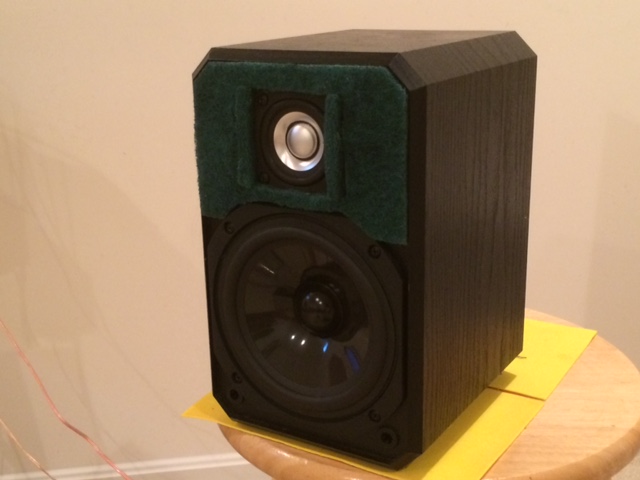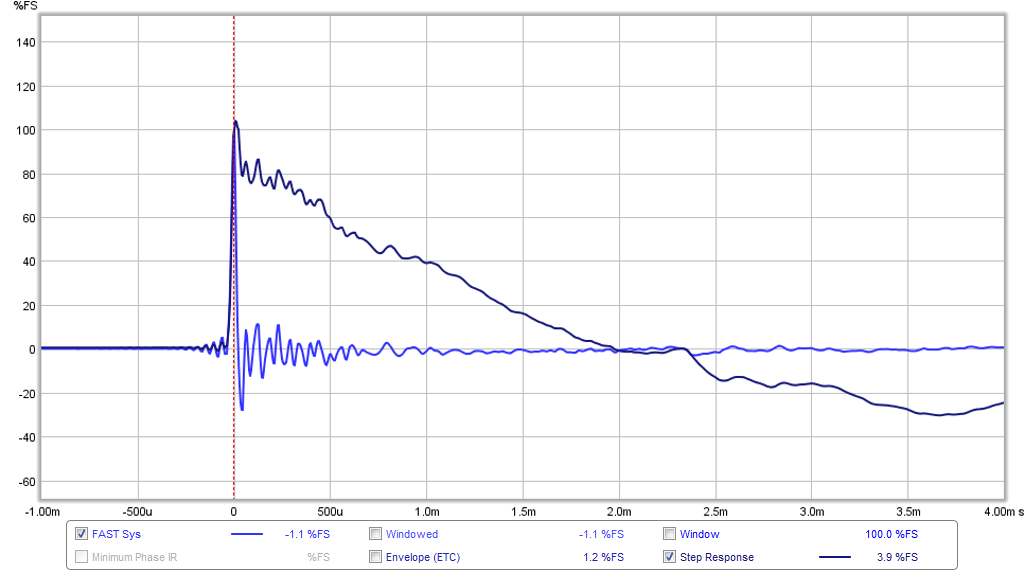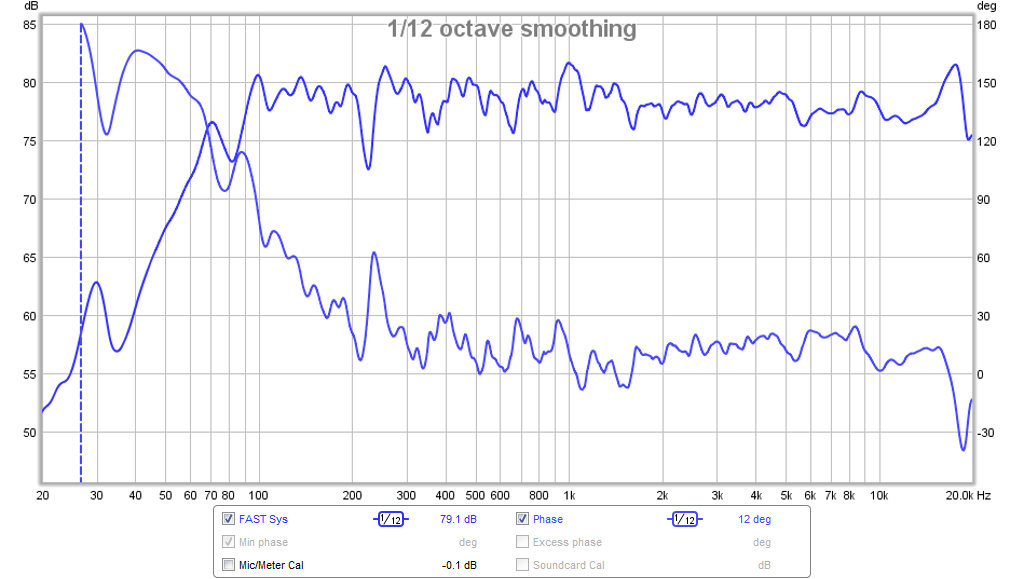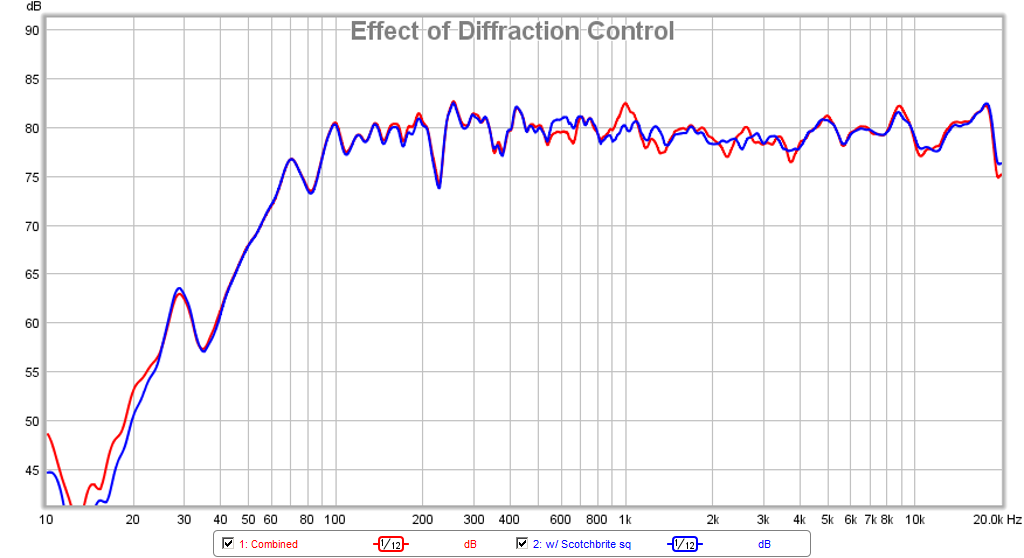Having read about LS 3-5a monitor's response which has bump on low end as these were meant for broadcasting van. What driver size would be required to have the same response (linear) without the need for bass bump ?
Regards.
This is IMO wrong. If you read the report for the original it was flat. None of the production units actually met the spec of that prototype. over time the 'bbc swayback' FR became enshrined in myth. Despite the legend production units were not particularly consistent.
And not suprisingly reports from anyone who has heard that prototype pair are that they are streets ahead of any of the later production.
The fact that scraggly well used sets from BBC studios still sell for over £600 a pair amazes me.
Yes, you may be right. But lots of frequency response images shows bump at low end so may be they were later production.
Regards
Regards
If you listen to a small 5" speaker with a flat frequency response that rolls off early you are likely to be struck by the impression of missing bass. A modest bump tends to lessen this impression. The bump is not wrong but making the best of a bad job. What is wrong is using a 5" driver for the low frequencies.Yes, you may be right. But lots of frequency response images shows bump at low end so may be they were later production.
Regards
Without the bump, speakers of limited LF response like this will not sound good. How much of this bump, visually it depends on the horizontal and vertical scales.
The bump is created by an inductor [e.g. 1.53 mH] in parallel with a resistor [e.g. 82 Ohm].
The resistor also functions to improve LF extension [of small woofer] by sacrificing sensitivity [because it was intended for near field listening].
The bump is created by an inductor [e.g. 1.53 mH] in parallel with a resistor [e.g. 82 Ohm].
The resistor also functions to improve LF extension [of small woofer] by sacrificing sensitivity [because it was intended for near field listening].
Last edited:
What is wrong is using a 5" driver for the low frequencies.
There are many small drivers [with limited LF extension] which has great midrange quality not attainable from big woofers [with extended LF response]. Some of the LS do have such beautiful midrange. And small cone matches well with tweeter's directivity.
So there is always a [good enough] reason to build two way with such a small woofer. Nowadays, LF extension of some five inch drivers are just way beyond that classics.
A 5" driver cannot provide sufficient SPL to be used in a room for the low frequencies as explained above. This is the problem. Whether the driver is flat down to 20 Hz at low SPLs is largely irrelevant.So there is always a [good enough] reason to build two way with such a small woofer. Nowadays, LF extension of some five inch drivers are just way beyond that classics.
Small 2 way speakers make a lot of sense for budget applications where high fidelity at standard listening levels is not the objective. If you sit close to them and have a subwoofer for below 100 Hz or so then you can get reasonable sound quality but with limited spaciousness due to the limited indirect sound. What you get when they are used on stands out in the room as is popular these days is not high fidelity sound. The expensive small 2 way audiophile speaker is an interesting phenomenon.
Small 2 way speakers make a lot of sense for budget applications where high fidelity at standard listening levels is not the objective. If you sit close to them and have a subwoofer for below 100 Hz or so then you can get reasonable sound quality but with limited spaciousness due to the limited indirect sound. What you get when they are used on stands out in the room as is popular these days is not high fidelity sound. The expensive small 2 way audiophile speaker is an interesting phenomenon.
You seem to love bass very much 😀
There is trade off in speakers, and everyone have their own preference. My standard for minimum LF extension is 60 Hz. This is achievable with many 5.25 midwoofers [Lower frequency is created by the small room and the speaker positioning]. Higher than 60 Hertz it would be just too many musical information missing from my preferred music. As long as the musicality of double/standing bass can be felt, it is okay with me. Of course it is not high fidelity by your standard 😀
There is not much deep bass in the music I prefer but I do like percussion to sound like percussion.You seem to love bass very much 😀
It is not my standard but the standard of the recording industry and, to some extent, how our nonlinear sound perception works. Most music is perceived as tonally balanced somewhere around 80-85 dB average which is roughly what the industry works to (unlike film there are no agreed standards just common practises). Louder would be good but for high fidelity at standard levels I think many would accept this as a reasonable minimum. On top of that we need to handle musical peaks without distortion. A typical value for this is 20 dB even though music can have some peaks that are higher. Heavily compressed music might only need 12 dB or so. We want our speakers to reproduce something like 100-105 dB peaks without distorting. This needs to be at our listening distance in the room and not the oft-quoted 1m. Also because we are dealing with peaks that means the direct sound and not the indirect which may be brought up by the room reflections. The minimum size for drivers follows from this.There is trade off in speakers, and everyone have their own preference. My standard for minimum LF extension is 60 Hz. This is achievable with many 5.25 midwoofers [Lower frequency is created by the small room and the speaker positioning]. Higher than 60 Hertz it would be just too many musical information missing from my preferred music. As long as the musicality of double/standing bass can be felt, it is okay with me. Of course it is not high fidelity by your standard 😀
When I started taking in an interest in home audio before the audiophile thing kicked off normal home high fidelity speakers were 3 ways with 12" woofers. This was before there was much musical information below 50Hz and what was there was in mono giving effectively 2 x 12" woofers. Modern music can have significantly more deep bass and yet many audiophiles today consider expensive 2 ways with 5" drivers to be high fidelity. Interesting stuff.
A modest bump tends to lessen this impression.
To my ear the cost is usually muddying male voices to the point of distraction. The Tannoy DC4s in my TV system employ that tailoring, anything less than three feet from the back wall requires damping the rear port with foam plugs. It makes for an odd system trade-off, pint sized speakers that must be placed well into the room to avoid congested vocal reproduction.
Reviewers seem to love it though. Google translate of one example below.
Attachments
When I started taking in an interest in home audio before the audiophile thing kicked off normal home high fidelity speakers were 3 ways with 12" woofers.
Yes, three way with twelve inch woofer is classics. Like the AR series. But man, aren't they awful 😀 And many used small magnet 😛 And the worst is of course the midrange quality [even Fostex is better] 😀
It's a difficult trade off between high quality sound versus wider bandwidth reproduction.
But don't think that those twelve inch woofers can always go lower than smaller woofers. I have many woofers, especially 12" ones. My favorite in term of bass are strangely 10" woofers.
I often want to listen to music at high power [I still have 5 heavy amps for concert level performance], but I'm restricted by my surroundings [neighbors and wife]. And I'm also restricted by small rooms so that it is very difficult to reproduce clean low bass.
In the 50-100Hz where 5" drivers fail they perform just as well as every other speaker with a stiff enough cone to be pistonic in this region, sufficient cone area and a motor that does not distort heavily enough to be audible. At these frequencies the room is in control and the ear is not particularly sensitive to anything much. The task for a speaker in this range is straightforward and easy to achieve which makes it all the more odd that a significant proportion of modern expensive audiophiles speakers fail in this region simply due to substantially undersized drivers. At higher frequencies we hear a lot more of the speaker and the advances in driver and speaker technology are indeed audible as you point out.Yes, three way with twelve inch woofer is classics. Like the AR series. But man, aren't they awful 😀 And many used small magnet 😛 And the worst is of course the midrange quality [even Fostex is better] 😀
When Harman developed an index to map measurements to subjective preferences the low frequency performance was a heavily weighted parameter (I cannot find the article - anyone? - but my recollection is something like 40%). This aligns with my experience of listening to small speakers and speakers with adequately sized drivers. So what supports the modern enthusiasm for speakers with greatly undersized drivers?
When Harman developed an index to map measurements to subjective preferences the low frequency performance was a heavily weighted parameter (I cannot find the article - anyone? - but my recollection is something like 40%). This aligns with my experience of listening to small speakers and speakers with adequately sized drivers. So what supports the modern enthusiasm for speakers with greatly undersized drivers?
In "blue collar" population, bass is really important. Sometimes, unrealistic bass [mid bass bump] is the norm. I have many friends from this group. Setting the tone control "flat" is unacceptable for them. This is taste.
But taste/preference can change, but it requires experience.
Many people love 3D sound stage, accurate tonality, details, airy treble, low distortion. Things usually available from expensive products. The size is only a matter of budget.
FWIW, I had for a couple of days, in my room, the original chartwell ls3-5a and I also have the continuum by jeff bagby.If you want a LS3-5a clone with superior sound, I suggest Jeff Bagby's Continuum version. Jeff studied the original design and significantly improved and iterated it. A parts kit with plans ($353) is found at Meniscus Audio:
Continuum, Pr
The plans are only available via the Meniscus link but dozens of people on the Parts Express Tech Talk forum have built Jeff's design so help would be available if you need it.
Jeff's Continuum is also available ready-made from Salk Sound at $1200 per pair. See details at this link and click the embedded Continuum links to read the Overview, Features, and Specs/Pricing.
Continuum home
Highly recommended!
I dont think they sound alike much at all.
I couldnt live with ls3 5a, imo, continuum sounds better.
Still, I dont think that in the long run, someone can be happy with a 5 inch two way without subwoofer.
Last edited:
yes, harman show, IIRC, that 25% of the SQ perception is bass performance.In the 50-100Hz where 5" drivers fail they perform just as well as every other speaker with a stiff enough cone to be pistonic in this region, sufficient cone area and a motor that does not distort heavily enough to be audible. At these frequencies the room is in control and the ear is not particularly sensitive to anything much. The task for a speaker in this range is straightforward and easy to achieve which makes it all the more odd that a significant proportion of modern expensive audiophiles speakers fail in this region simply due to substantially undersized drivers. At higher frequencies we hear a lot more of the speaker and the advances in driver and speaker technology are indeed audible as you point out.
When Harman developed an index to map measurements to subjective preferences the low frequency performance was a heavily weighted parameter (I cannot find the article - anyone? - but my recollection is something like 40%). This aligns with my experience of listening to small speakers and speakers with adequately sized drivers. So what supports the modern enthusiasm for speakers with greatly undersized drivers?
however. the test room of harman is heavily treated. Most audiophile have FAR from good acoustic.
Id say that in order to have good bass performance in a room, Id take a 5 inch woofer and heavily treated room over a 12 inch bass three way in a untreated room.
In a room, bass SQ is even more related to the room acoustic then driver size.
Last edited:
FWIW, I had for a couple of days, in my room, the original chartwell ls3-5a and I also have the continuum by jeff bagby.
I dont think they sound alike much at all.
I couldnt live with ls3 5a, imo, continuum sounds better.
Still, I don't think that in the long run, someone can be happy with a 5 inch two way without subwoofer.
If you are inferring that I said that the LS3-5a and Continuum sounded alike, then you need to reread my statement that the Continuum "significantly improved" the sound. Not the same but better.
I'll agree with your statement that any speaker like the LS3-5a or Continuum needs a subwoofer to make real bass. Jeff Bagby adds a subwoofer to his Continuum pair to create true happiness.
Jim
A full range tweeter option for an LS3/5A clone?
I was not trying to clone an LS3/5A but ended up with something surprisingly similar using all different technology: active bi-amped miniDSP, a Fountek FR58EX aluminum 2in full range as the tweeter XO at 1700Hz, and the Aurum Cantus AC130F1 (from the Continuum) for the woofer. Measurements look great and it sounds real nice. All this is stuffed into a very compact old Boston HD5 enclosure (9.75in tall x 6.25in wide x7in deep). The real surprise here is that since both drivers are so flat and wide band, I went with a first order XO for transient perfect and flat phase speaker.
http://www.diyaudio.com/forums/full-range/280331-fr58ex-ac130f1-micro-fast.html

Impulse and Step Response:

Phase:

Oh, and the green Scotchbrite scouring pad really does work in reducing baffle diffraction:

So to answer the question posed by the thread title, not sure if this is cheap, it's not expensive at $80 for drivers per side ($160 for both), $150 for for miniDSP and two class D amps. Repurposed box for $310 total with DSP flexibility and transient perfect sound.
I was not trying to clone an LS3/5A but ended up with something surprisingly similar using all different technology: active bi-amped miniDSP, a Fountek FR58EX aluminum 2in full range as the tweeter XO at 1700Hz, and the Aurum Cantus AC130F1 (from the Continuum) for the woofer. Measurements look great and it sounds real nice. All this is stuffed into a very compact old Boston HD5 enclosure (9.75in tall x 6.25in wide x7in deep). The real surprise here is that since both drivers are so flat and wide band, I went with a first order XO for transient perfect and flat phase speaker.
http://www.diyaudio.com/forums/full-range/280331-fr58ex-ac130f1-micro-fast.html

Impulse and Step Response:

Phase:

Oh, and the green Scotchbrite scouring pad really does work in reducing baffle diffraction:

So to answer the question posed by the thread title, not sure if this is cheap, it's not expensive at $80 for drivers per side ($160 for both), $150 for for miniDSP and two class D amps. Repurposed box for $310 total with DSP flexibility and transient perfect sound.
Last edited:
Perhaps this is the best cheap way of made a very good clone of the LS3/5A... or a real LS3/5A:
Stirling Broadcast LS3/5a cabinet, Eboy | eBay
Stirling Broadcast LS3/5a cabinet, Rosewood | eBay
Pair of built & tested replacement LS3/5a baffles | eBay
Rogers LS3/5a Felt Tweeter Squares | eBay
Stirling Broadcast LS3/5a Tweeter Grilles | eBay
Pair of Stirling Broadcast LS3/5a Front grilles - Tygan covered | eBay
Stirling Broadcast LS3/5a cabinet, Eboy | eBay
Stirling Broadcast LS3/5a cabinet, Rosewood | eBay
Pair of built & tested replacement LS3/5a baffles | eBay
Rogers LS3/5a Felt Tweeter Squares | eBay
Stirling Broadcast LS3/5a Tweeter Grilles | eBay
Pair of Stirling Broadcast LS3/5a Front grilles - Tygan covered | eBay
Ok, bumping this thread for me to read fully later as I want to do this. BTW, I am a newb here. Will do an intro later when I have time. Going into the dentist now.
- Home
- Loudspeakers
- Multi-Way
- Any "cheap" way to clone LS3-5a?
